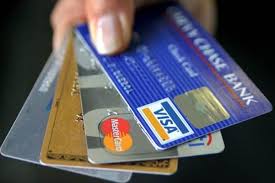Having a bad credit score can make it difficult to secure loans, but it doesn’t mean you are out of options. Bad credit loans are specifically designed to help individuals with poor credit histories access the funds they need. Understanding the different types of bad credit loans and how to navigate the application process can help you find a suitable solution to your financial challenges.
What Are Bad Credit Loans?
Bad credit loans are loans tailored for individuals with low credit scores or poor credit histories. Traditional lenders often see these borrowers as high-risk, but many specialized lenders are willing to extend credit to those who may not qualify for conventional loans. These loans typically come with higher interest rates and stricter terms due to the increased risk for the lender.
Types of Bad Credit Loans
There are various types of bad credit loans available, each designed to meet different financial needs and circumstances:
1. Personal Loans: Unsecured personal loans for bad credit can be used for a wide range of purposes, from consolidating debt to covering emergency expenses. They do not require collateral but often come with higher interest rates.
2. Secured Loans: These loans require collateral, such as a car or savings account, to secure the loan. Secured loans may offer lower interest rates compared to unsecured bad credit loans because the collateral reduces the lender’s risk.
3. Payday Loans: Short-term, high-interest loans that are typically due on your next payday. They are easy to obtain but can be very expensive and lead to a cycle of debt if not repaid promptly.
4. Title Loans: Secured by your vehicle title, these loans provide quick cash but put your car at risk of repossession if you fail to repay.
5. Credit Union Loans: Some credit unions offer loans specifically designed for members with bad credit. These loans may have more favorable terms than those from traditional banks.
6. Peer-to-Peer Loans: Borrowing from individuals through online platforms can sometimes offer better rates and terms for those with bad credit.
Benefits of Bad Credit Loans
Bad credit loans offer several advantages for borrowers with low credit scores:
– Access to Funds: The primary benefit is the ability to access needed funds despite having a poor credit history. This can be crucial for covering unexpected expenses or consolidating debt.
– Credit Improvement: Successfully repaying a bad credit loan can help improve your credit score over time, making it easier to qualify for better loans in the future.
– Flexible Use: These loans can be used for various purposes, from medical bills to home repairs, providing flexibility in addressing your financial needs.
– Variety of Options: With various types of bad credit loans available, you can find one that best suits your financial situation and repayment ability.
Considerations before Taking a Bad Credit Loan
While bad credit loans can provide necessary funds, it’s important to consider the following factors before applying:
– Interest Rates and Fees: Bad credit loans often come with higher interest rates and fees due to the increased risk for lenders. Be sure to understand the total cost of the loan.
– Repayment Terms: Carefully review the repayment terms, including the loan duration and monthly payment amounts. Ensure you can afford the payments to avoid further financial strain.
– Lender Reputation: Research lenders to ensure they are reputable and avoid predatory lending practices. Read reviews and check ratings from other borrowers.
– Risk of Collateral: For secured loans, be aware that defaulting on the loan could result in the loss of your collateral, such as your car or savings.
– Impact on Credit Score: While timely repayment can improve your credit score, late or missed payments can further damage it.
How to Apply for a Bad Credit Loan
Applying for a bad credit loan involves several key steps:
1. Check Your Credit Score: Understanding your credit score can help you identify which loans you may qualify for and what interest rates to expect.
2. Determine Your Needs: Calculate the amount you need to borrow and ensure it aligns with your ability to repay.
3. Research Lenders: Compare offers from different lenders to find the best terms, interest rates, and fees. Look for lenders that specialize in bad credit loans.
4. Gather Documentation: Prepare necessary documents such as identification, proof of income, and bank statements to streamline the application process.
5. Submit Your Application: Complete the loan application and provide the required documentation. Many lenders offer online applications for added convenience.
6. Review and Sign: If approved, carefully review the loan terms and conditions before signing the agreement. Ensure you understand all the details, including the repayment schedule.
Conclusion
Bad credit loans can be a valuable resource for individuals facing financial challenges due to poor credit histories. By understanding the different types of bad credit loans and carefully considering your options, you can find a solution that meets your needs while helping to improve your credit over time. Always borrow responsibly, ensuring you can meet the repayment terms to avoid further financial difficulties and enhance your financial stability.



